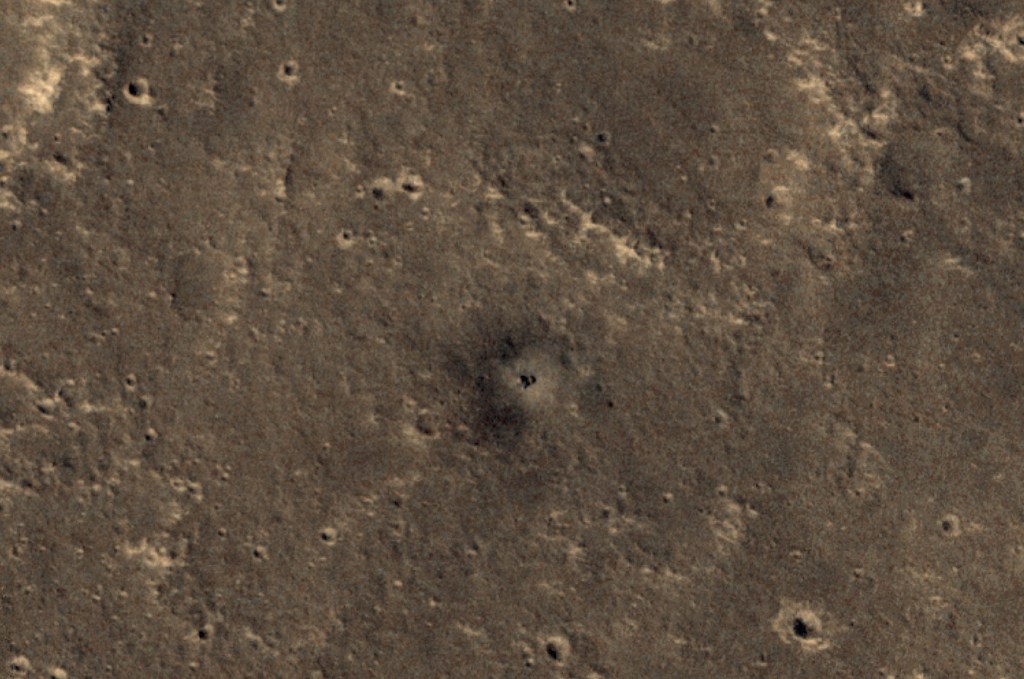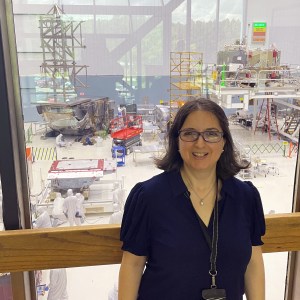Sedimentary and planetary geologist Michael Thorpe finds the stories rocks have to tell, those on Earth and those from Mars.
Name: Michael Thorpe
Title: Sedimentary and Planetary Geologist
Organization: Planetary Environments Laboratory, Science Directorate (Code 699)
What do you do and what is most interesting about your role here at Goddard? How do you help support Goddard’s mission?
As a sedimentary and planetary geologist, my research focuses on how sediments are transformed from the mountains to the lakes downstream, which is a process called source to sink. I study this phenomenon around the globe on Earth and then compare the results to those from similar sites on Mars.
Why did you become a geologist?
I grew up on the Hudson River Valley and loved to be outdoors. I knew that I wanted to pursue a career that kept me outdoors hiking, looking at nature and the environment. My sister, my hiking companion, always told me that rocks have a story to tell, which inspired me.
What is your educational background?
I have a bachelor’s degree in geology from Towson University, and both a master’s and a doctorate in geosciences from Stony Brook University. I then did a NASA post-doctoral fellowship at NASA’s Johnson Space Center in Houston. I was also later contracted at Johnson as a Mars Sample Return scientist.
Why did you come to Goddard?
Goddard was a dream job for me because I have always admired the group of scientists here, and I really wanted to work with the team in the planetary environments laboratory. Over the years, I closely followed their work, and it is exciting to be in a role to start contributing. I came to Goddard in July 2022 and tried to hit the ground running.

Tell us about your field campaigns.
I target terrains on Earth that may have been similar to ancient environments on the surface of Mars. To add some complexity to the system, I explore environments around the globe to better understand the impact climate has on the weathering of rocks. This work has implications for planetary exploration but also helps in understanding the long-term carbon cycle on Earth and its role in climate change.
In the field, I scoop up sediments, rocks, and water samples all the way from the source terrains in the mountains to depositional sites downstream. I then bring them back to our labs here at Goddard to study their geochemistry and minerology, but also ship samples off to my amazing collaborators for additional analysis in their labs around the world.
I have been super lucky early in my career be a part of five field campaigns to Iceland and then one to Hawaii, Idaho, and most recently Lazarote, Spain.
I hope to keep exploring places around the globe because each field site adds a new piece to the puzzle. However, every place I go, the puzzle ends up getting more complex and it motivates me to develop more questions for the next adventure.
What preparations do you take to conduct remote field work?
I’ll use Iceland as example for this one. For this work, we commonly are trekking to remote locations. In order to get there, we took modified trucks which were able to go through water, ice, and snow and even climb some pretty steep terrains. Theses trucks are cool because the driver can inflate and deflate the very large tires in real-time.
In the field, we wear our warm gear including down jackets but also sometimes waders to keep us dry while surveying a river. One of my favorite pieces of clothing in the field is a buff, which sits around our necks but we can also pull it up over our faces to shield us from the elements, which can include 70-plus mph winds at times.
Some recent and exciting preparation we have for the field is bringing an inflatable boat, basically a floating pontoon, to sample lake sediment. We take the pontoon over the water and then drill for sediment samples off the platform.
How important is a good team during remote field work?
Establishing a good team is the foundation for successful field work.
As a team leader, it is important to recognize the strengths as well as the limitations of all personnel, including myself. I am aware of my specialties and the areas where each teammate may thrive. When you put the right person in the right position, it makes the team excel. This fosters mutual respect and builds a support system. We understand we need to get the job done and how important each role is for the entire team.
I tend go out in fairly large groups, sometimes as many as 25 people. We all respect the science and each other. Everyone brings a different piece to the team. When we are sampling, everyone has a mission and a role, sometimes creating sub-teams to a sample different area or components of the study site.
What is the most important advice your mentor Amy McAdam told you?
Amy is the geochemist who leads our lab. Amy’s most important advice for me has been “go for it.” I say that jokingly, but it truly is incredibly helpful as a scientist to have someone backing you like that. She puts me in a position to succeed and always gives me the thumbs up to follow my scientific curiosity. Amy leads by example, both in the lab and field, I am grateful for all her support and look forward to working with her for many years.
As a mentor yourself, what is the one thing you tell your students?
Stay curious and do what you love. That’s the motto I have been following in my career, passed down from an amazing lineage of mentors, and I encourage all my mentees to do the same. It’s important for my students to follow their passions as well as to come up with new ideas. At the end of the day, it is remarkable to see a student develop their own research avenue. I hope to continue paying it forward and I look forward to mentoring the next generation of scientists for years to come.
What do you do for fun?
I love to watch and play all sports. Additionally, hiking brings me to my happy place. Hitting the trails with friends or my pup is icing on the cake. Speaking of cake, I also thoroughly enjoy cooking. Cooking relaxes me, it brings the family together, and it’s also something my wife and I love to do together. One of our favorite traditions is pizza Fridays, where we make some homemade pies and everyone is welcome. As for toppings, my favorite might be fried eggplant or spicy Italian sausage.
If you were to have a dinner party, who would you invite, living or dead, in addition to your family?
Easy! I’ve actually thought about this a ton. I would of course first invite my favorite athletes: Michael Jordan, Kobe Bryant, Derek Jeter, and Emmitt Smith. These guys were my role models growing up and their work ethic was truly inspiring.
Additionally, I would love to sit down and have a pizza pie with Neil Armstrong and Jack Schmitt. Neil was obviously the first man on the Moon and Jack was the first geologist on the Moon. Hearing some stories from these pioneers would no-doubt be a lifetime highlight.
What is your “six-word memoir”? A six-word memoir describes something in just six words.
Motivated. Passionate. Curious. Supportive. Hard-working. Family-man.
By Elizabeth M. Jarrell
NASA’s Goddard Space Flight Center, Greenbelt, Md.
Conversations With Goddard is a collection of Q&A profiles highlighting the breadth and depth of NASA’s Goddard Space Flight Center’s talented and diverse workforce. The Conversations have been published twice a month on average since May 2011. Read past editions on Goddard’s “Our People” webpage.
































